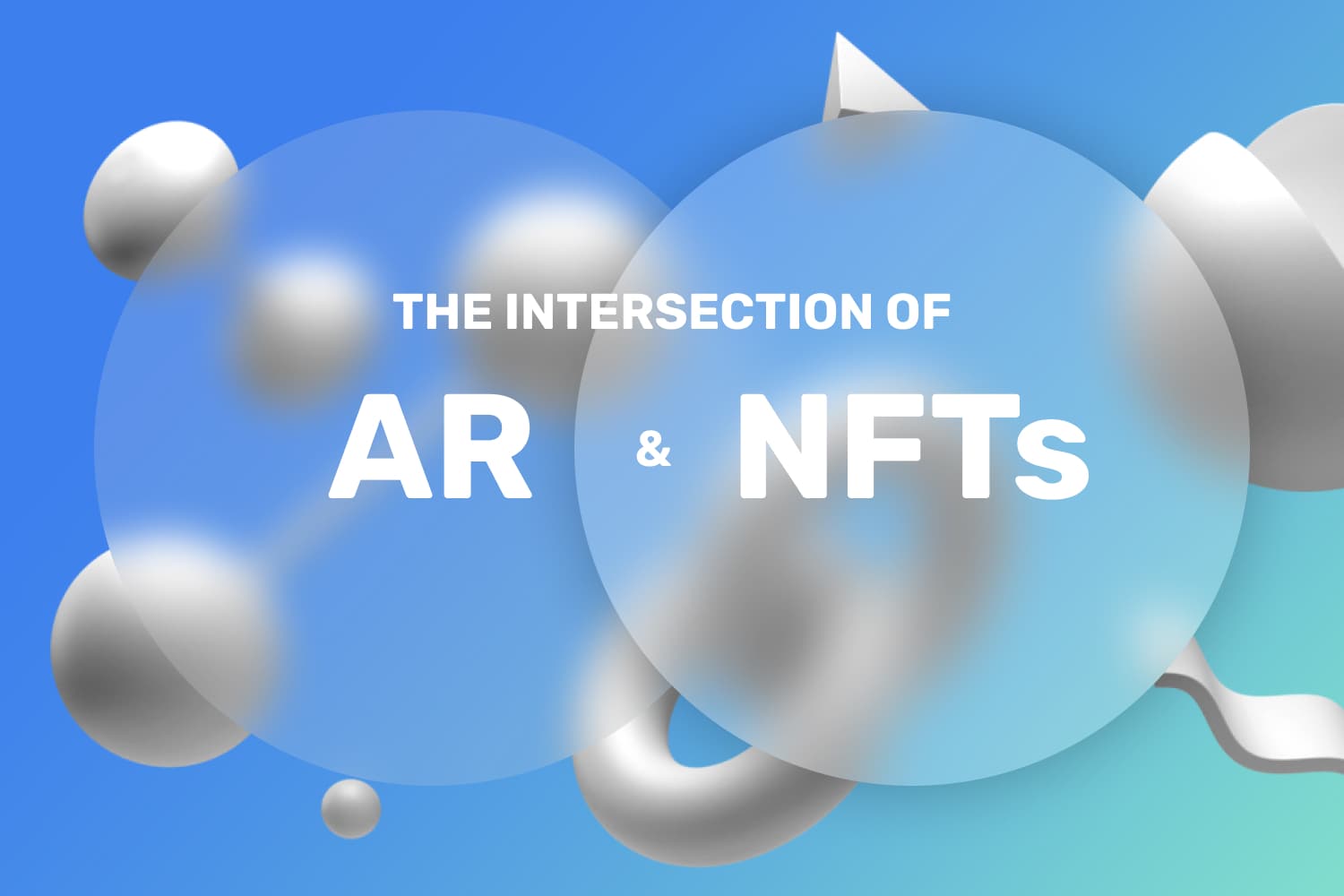The Intersection of NFTs and AR: Where It’s at and Where It’s Headed

Just two years ago, many people had never heard of either augmented reality (AR) or Non-Fungible Tokens (NFTs); now, they are common buzzwords understood by millions of people. But how do they interact with one another? This intersection between NFTs and AR is still in its infancy but has tremendous potential to change how consumers create, view, and interact with products, locations, and other individuals online. With that in mind, here’s an explanation of how this intersection between NFTs and AR is important for future innovation.
AR as a Medium for NFT Promotion and Sales
Augmented reality is a computer-generated, interactive experience that imitates the real world. It is used to overlay computer-generated elements over live action or to create virtual environments. Because of its immersive nature, augmented reality can effectively showcase many different sorts of content.
AR has the potential to transform several industries and markets and could revolutionize the way we buy and sell goods and services by making them more accessible than ever before. AR technology has many applications, but one of its most exciting uses is in NFTs, which often come in the form of images or 3D models.
Because of its ability to merge the digital and physical worlds, NFTs can take on new forms that weren't possible before. In addition, AR can help promote and demonstrate NFTs to collectors, investors, and artists because it allows users to see the 3D model from all angles. This helps boost consumer trust before making a purchase.
NFT art is often locked behind a screen, but thanks to new platforms, it's possible to establish virtual galleries and explore them together to share the tales behind the artworks, artists, or collections. It is even possible to showcase a wide variety of NFTs in a single scene in an immersive 3D environment, allowing customers to quickly and easily peruse the whole collection before purchasing.
AR as a Medium for NFT Viewing and Sharing
Although most NFTs are still 2D artwork, 3D artwork is quickly gaining popularity. Just check out some of the latest 3D NFTs on OpenSea to see how popular they are in the NFT marketplace. As a result of advancements in augmented reality, people can now virtually incorporate their personal art collections into their environment.
The proliferation of 3D NFTs is fuelling the rapid development of the Metaverse, the Internet's next evolution. When combined with augmented reality technologies like VPS, SLAM, and Image Target tracking, 3D NFTs can be "location-locked," allowing users to keep their NFTs at specific locations in the real-world Metaverse.
That said, 3D NFTs allow users to display or share their NFTs, whether clothing, furniture, or other objects. For instance, a permanently installed NFT might be mounted on the building's facade, allowing it to be seen by anybody that passes by. Also, an NFT of a hat could be shared with friends via a face filter.
NFTs Enable Ownership of Avatars and Identity
The necessity for users to have a visual identity is expanding as the popularity of multi-user immersive environments rises. People like to represent themselves in various ways, and 3D avatars are one option to do so. Avatars are a powerful tool for self-expression. They can represent the person behind a name, a project, or an idea.
Traditionally, NFT avatars were limited to just the platform they were created on. But the current expansion of the NFT avatar industry has far outpaced anyone's wildest dreams, expanding beyond the realm of video games and into the heart of popular culture with the help of celebrities like Cardi B, Rhianna, and Justin Bieber, who are helping in the creation of The Warehouse, an NFT fashion marketplace.
The next step in NFT avatar development is the market of open-world avatars that can function in a variety of virtual worlds. These virtual characters, which exist in three dimensions, can be easily "minted" as a new form of token (NFT), or they can wear various digital outfits, each of which is its own NFT.
For example, platforms such as Ready Player Me allow users to buy NFTs, add them to their inventory, attach clothing to their avatar, and then bring their avatar to different platforms. Users can also use these avatars in augmented reality and virtual reality environments and be deployed with motion capture technologies.
AR Unlocks New Visual Effects for Use Within NFT Artwork
With augmented reality, creators can leverage the user's camera data to enhance their work. For example, models commonly include reflections, but in traditional 3D viewing mediums, those reflections are typically static. Instead, the real world can be reflected in real-time through the augmented reality camera feed and incorporated into the 3D artwork.
NFT objects, like mirrors, can have their visual appearance altered simply by moving to a new environment. In addition, technologies like face tracking provide new methods of control for NFT-based interactive and animated artwork by providing a new canvas to place them.
How People Are Currently Leveraging AR and NFTs
People are already participating in this innovative combination of AR and NFT creation. Ryan Sarfati and Eric Skotnes painted The Majestic in downtown Tulsa in 2021. QR codes on the mural open an augmented version featuring swimming fish, flitting butterflies, and racing clouds. Those who can't visit Tulsa can enjoy the painting online in augmented reality.
Summary
Augmented reality is growing in popularity and has the potential to transform many industries and markets. NFTs are one of the most exciting application areas where this technology is being used right now. And remember, this is just the beginning.
As NFTs and AR continue to develop, we can expect even more innovations and improvements within the NFT industry and the mainstream market as a whole. As augmented reality continues to grow and expand, we look forward to seeing how this unique, revolutionary technology will be used in other innovative and surprising ways.





